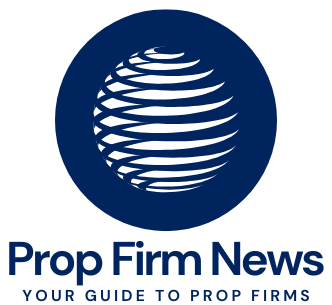In proprietary trading, performance metrics are critical for assessing a trader’s skill, discipline, and suitability for managing firm capital. Metrics like drawdown, risk-reward ratio, and win rate provide insights into profitability and risk management. In this comprehensive guide, we’ll explore the key performance metrics used by prop firms, their importance, and how traders can optimize them.
Why Performance Metrics Matter
Prop firms use performance metrics to evaluate traders during challenges and funded accounts. These metrics ensure traders can generate consistent profits while adhering to risk rules. For traders, tracking these metrics helps refine strategies and meet firm requirements.
For a broader understanding, visit Investopedia’s guide to trading metrics.
Key Performance Metrics in Prop Trading
1. Drawdown
Drawdown measures the decline in account balance from its peak, expressed as a percentage:
- Daily Drawdown: Maximum loss allowed in a single day (e.g., 5%).
- Maximum Drawdown: Total allowable loss (e.g., 10–12% of initial balance).
Example: FTMO enforces a 5% daily drawdown and 10% maximum drawdown. Learn more.
How to Optimize: Use stop-losses and conservative position sizing to stay within limits.
2. Risk-Reward Ratio
The risk-reward ratio compares the potential loss to the potential gain of a trade. A 1:2 ratio means risking $1 to gain $2.
Why It Matters: Prop firms favor traders with favorable ratios (e.g., 1:2 or 1:3) to ensure profitability outweighs losses.
How to Optimize: Identify trades with high-probability setups using tools like TradingView. Visit TradingView.
3. Win Rate
Win rate is the percentage of trades that are profitable. A 50% win rate means half of your trades are winners.
Why It Matters: While a high win rate is desirable, it must be balanced with risk-reward ratios to ensure overall profitability.
How to Optimize: Focus on high-quality setups and avoid overtrading.
4. Profit Factor
Profit factor is the ratio of gross profits to gross losses. A profit factor above 1.5 indicates a robust strategy.
How to Optimize: Combine high risk-reward ratios with disciplined trade selection.
5. Consistency Metrics
Some firms require consistent performance, such as avoiding large single-day gains or losses, to ensure sustainable trading.
Tools for Tracking Performance Metrics
- MyFXBook: Tracks drawdown, win rate, and profit factor. Visit MyFXBook.
- Edgewonk: Analyzes trade data for performance insights. Learn more.
- Firm Dashboards: Prop firms like The Funded Trader provide real-time metric tracking. Explore here.
Tips for Optimizing Performance Metrics
- Set Realistic Targets: Aim for achievable profit goals within drawdown limits.
- Use Stop-Losses: Protect against large losses to maintain low drawdowns.
- Analyze Trades: Review performance with tools like MyFXBook to identify weaknesses.
- Practice Discipline: Stick to your trading plan to improve win rate and consistency.
- Simulate Evaluations: Practice in demo accounts with firm-specific rules.
Challenges of Performance Metrics
- Balancing Metrics: High win rates may lead to low risk-reward ratios, and vice versa.
- Pressure: Meeting metrics during evaluations can be stressful.
- Data Overload: Tracking multiple metrics requires time and analysis.
Top Prop Firms and Their Metrics
- FTMO: Focuses on drawdown and profit targets. Visit FTMO.
- The Funded Trader: Emphasizes consistency and risk-reward. Explore here.
- SurgeTrader: Monitors drawdown and win rate in one-step evaluations. Check it out.
Conclusion
Performance metrics like drawdown, risk-reward ratio, and win rate are the yardsticks of success in prop trading. By understanding and optimizing these metrics, traders can pass evaluations and manage funded accounts effectively. Use tools like MyFXBook and Edgewonk, practice disciplined trading, and align your strategies with firm requirements. Explore reputable prop firms and start tracking your performance to unlock your trading potential!
